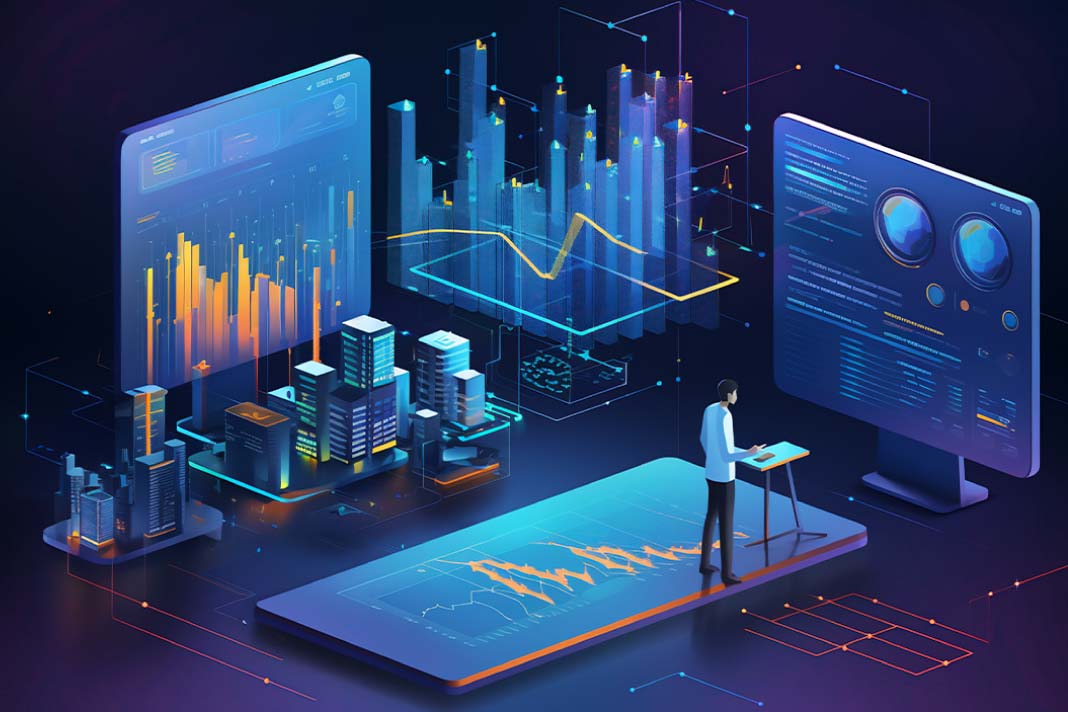Master data analysis with 2024’s top 10 AI tools for precision and efficiency
In the ever-evolving landscape of data analysis, integrating artificial intelligence (AI) and machine learning (ML) techniques has brought about a significant transformation. As we step into 2024, a plethora of AI tools promise to revolutionize the field, making data analysis more efficient, intuitive, and powerful. Let’s explore the top 10 best AI tools for data analysis in 2024 that redefine how we extract insights from data.
AutoGraph
Developed by Google, AutoGraph plays a crucial role in accelerating neural network training and simplifying model deployment. By automatically converting TensorFlow graphs into optimized GPU-compatible code, AutoGraph streamlines the development process, making it an indispensable tool for AI-driven data pipelines.
AutoVis
AutoVis brings automation to data visualization by selecting the most informative charts, adjusting color schemes, and optimizing layouts based on data context. Analysts can create compelling visualizations without manual tweaking, enhancing the accessibility of insights through intuitive visual representations.
BayesFlow
BayesFlow introduces Bayesian probabilistic modeling to data analysis, offering a robust framework that handles uncertainty and incorporates prior knowledge. Analysts can explore complex relationships within data while obtaining robust estimates, ensuring a more nuanced understanding of the underlying patterns.
DeepForecast
DeepForecast leverages the capabilities of deep learning models to predict time-series data with unparalleled accuracy. From stock prices to weather forecasts, this tool outperforms traditional methods by capturing intricate patterns and handling non-linear relationships, ushering in a new era of predictive analytics.
ExplainAI
ExplainAI addresses the challenge of black-box models by generating human-readable explanations for complex ML predictions. By providing insights into the “why” behind AI decisions, ExplainAI enhances trust and understanding, allowing analysts to navigate and interpret model behavior effectively.
GraphGPT
An extension of OpenAI’s GPT, GraphGPT specializes in graph-based data, understanding intricate network relationships. From recommending personalized connections to detecting anomalies, GraphGPT seamlessly bridges the gap between natural language processing and graph analytics, offering a comprehensive approach to data analysis.
MetaCluster
MetaCluster combines unsupervised learning and meta-learning to identify optimal clustering algorithms for specific datasets. By adapting to varying data characteristics, MetaCluster ensures robust clustering results across diverse domains, making it a versatile tool for data analysts.
NeuraLens
NeuraLens stands at the intersection of natural language processing (NLP) and computer vision, offering a robust solution for analyzing unstructured data. Whether it involves extracting insights from customer reviews or analyzing images, NeuraLens excels in accurate sentiment analysis and object recognition, providing a comprehensive understanding of diverse data types.
PandasAI
The best AI tool for data analysis, PandasAI, emerges as a game-changer by extending the capabilities of the popular Python library, Pandas. This advanced tool automates complex data preprocessing, streamlines feature engineering and handles missing value imputation. Its intuitive interface allows analysts to focus on high-level tasks while PandasAI takes care of the intricacies, enhancing overall efficiency.
QuantumSift
QuantumSift harnesses the power of quantum computing for data analysis, excelling in optimization, clustering, and anomaly detection. As quantum hardware matures, QuantumSift is poised to play a pivotal role in solving computationally intensive problems, marking a significant shift in the capabilities of data analysis tools.
Conclusion
As we navigate the data-driven landscape of 2024, these ten best AI tools are at the forefront of revolutionizing data analysis. From automating intricate tasks to leveraging quantum computing, these tools cater to diverse needs, promising a future where extracting meaningful insights from data becomes more accessible and efficient. Embracing these advancements will undoubtedly empower data analysts to navigate the complexities of data analysis with greater precision and ease.



